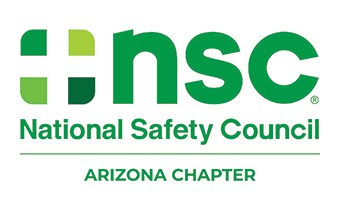
As Arizona continues to break heat records year after year, keeping workers safe from the effects of extreme temperatures has become a growing public safety concern. Now, with a new executive order from Governor Katie Hobbs, the state is taking direct action to address heat-related risks on the job. The order established the Workplace Heat Safety Task Force, a team responsible for developing practical Arizona-specific guidelines on workplace heat safety.
ACNSC President and CEO Rick Murray has been appointed to this Task Force, joining a diverse group of safety professionals, labor representatives, and industry leaders. We sat down with Rick to get his firsthand insights on the importance of the initiative, the work ahead, and what safety professionals should know.
What makes heat safety such a timely and critical issue in Arizona right now?
It’s no secret that Arizona is hot — and getting hotter. Heat-related deaths have surged over the past two decades due to rising temperatures and increasing vulnerability among residents. Outdoor workers, older adults, low-income residents, and people without reliable air conditioning are at greatest risk. Longer summers and more days above 100°F only add to the threat.
What was your reaction to being appointed to the Task Force? What do you hope to contribute?
I’m honored to be part of the group. At ACNSC and the National Safety Council, we’ve done extensive work educating the workforce on heat-related injuries. I hope to bring that experience to the table and help create effective, realistic policies that protect workers.
Walk us through how the Task Force will approach developing the guidelines.
We’ll be looking at a range of factors — everything from time of year and time of day when work is performed, to the physical, emotional, and economic effects of heat on employees and employers. Our approach will be collaborative and rooted in both lived experience and science-based data. I’m a firm believer that the best outcomes come from including a variety of voices.
What are some common misconceptions employers have about heat risk?
One major misconception is that only outdoor workers are at risk. Workers in indoor spaces like warehouses, kitchens, and factories can also suffer from heat stress — especially in poorly ventilated environments. Another myth is that water alone is enough. Hydration is important, but workers also need rest breaks, cooling areas, and time to acclimate — especially during heatwaves or when starting a new job.
What workplace practices have you seen that reduce heat illness risk?
Modifying schedules is one of the most effective steps. Start shifts early or late to avoid peak heat. Rotate workers between hot and cooler tasks. And make sure more frequent breaks are built in during extreme conditions.
Why is cross-sector collaboration so important to this Task Force?
Any good policy needs input from the people it affects. Business owners, workers, their representatives, and safety professionals all bring different but equally important perspectives. That mix will help us create something that’s not only protective but also practical and enforceable.
Heat-related incidents are often underreported. What needs to change?
It starts with training. Workers and supervisors need to know the signs of heat illness, how to stay hydrated, when to seek help, and how to administer first aid. When you give workers the knowledge and tools, you empower them to take control of their safety.
How does education and training help with prevention and preparedness?
Training is the frontline defense. Toolbox talks, tailgate meetings, webinars, and bilingual signage all make a difference. Not every worker speaks fluent English, so it’s essential that our resources reflect the diversity of Arizona’s workforce.
What does success look like to you?
Success means employers across Arizona are adopting and using the guidelines. If we start to see fewer heat-related medical visits and incidents, we’ll know we’ve made real progress.
The Task Force is expected to finalize its recommendations — which will build on the Heat Stress State Emphasis Program established by the Arizona Division of Occupational Safety and Health in 2023 — by the end of the year. We’ll share updates as they develop.
